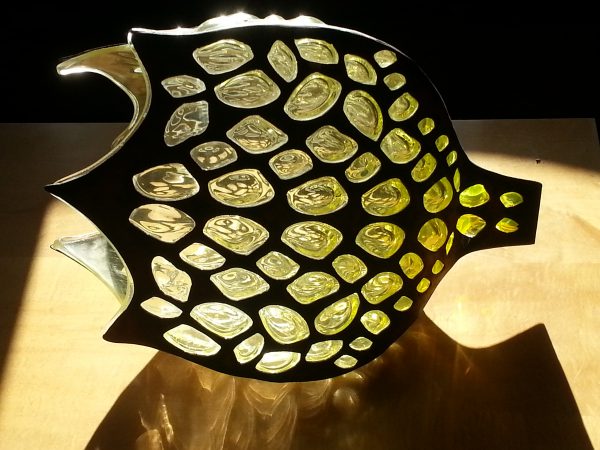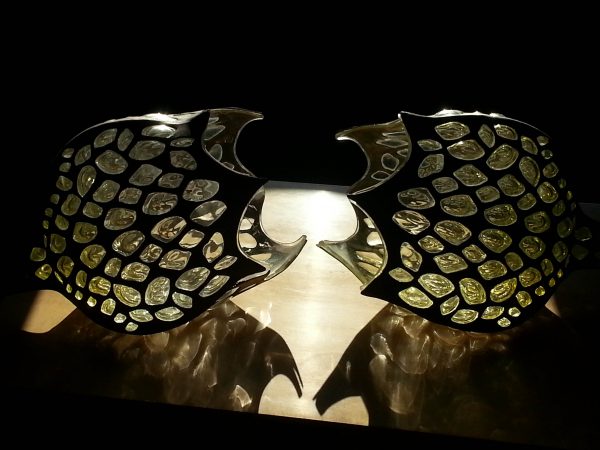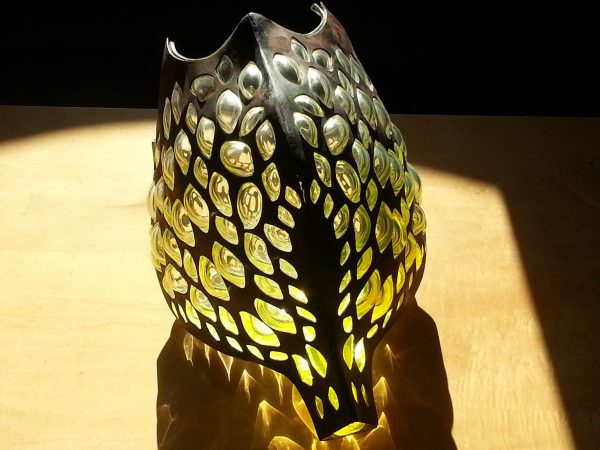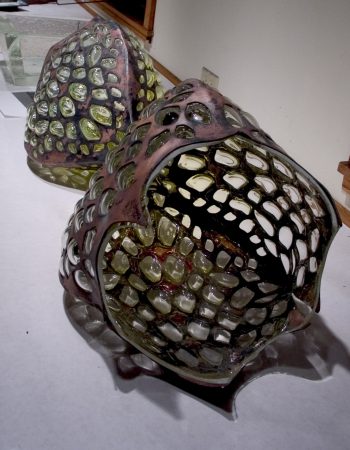Diatomaceous are glass-blown works inspired by the drawings and research of Ernst Haeckel 1834-1919. For years I have enjoyed the book Kunstformen der Natur (Art Forms in Nature) of prints drawn by Ernest Haeckel, a prominent German biologist in his day. Haeckel was a zoologist, naturalist, eugenicist, philosopher, physician, professor, marine biologist, and artist who discovered many new species. His drawings and watercolors have inspired thousands of artists and scientists since the release of his book.
Creating these glass and metal works was a process. I began with Adobe Illustrator to create cut paths for steel elements. I used an industrial-strength laser cutting system to make the cutouts and then worked with the glass blowers at The Ohio State University to blow glass into the first forms.
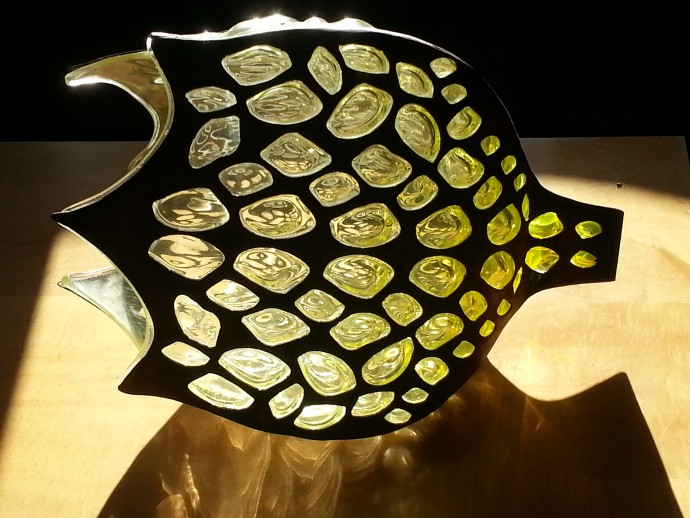
The forms were quite satisfying, and very much to my liking, however, in the annealing process, the first experiments, sadly proved that steel and glass have very different coefficients of expansion and contraction, so they cracked.
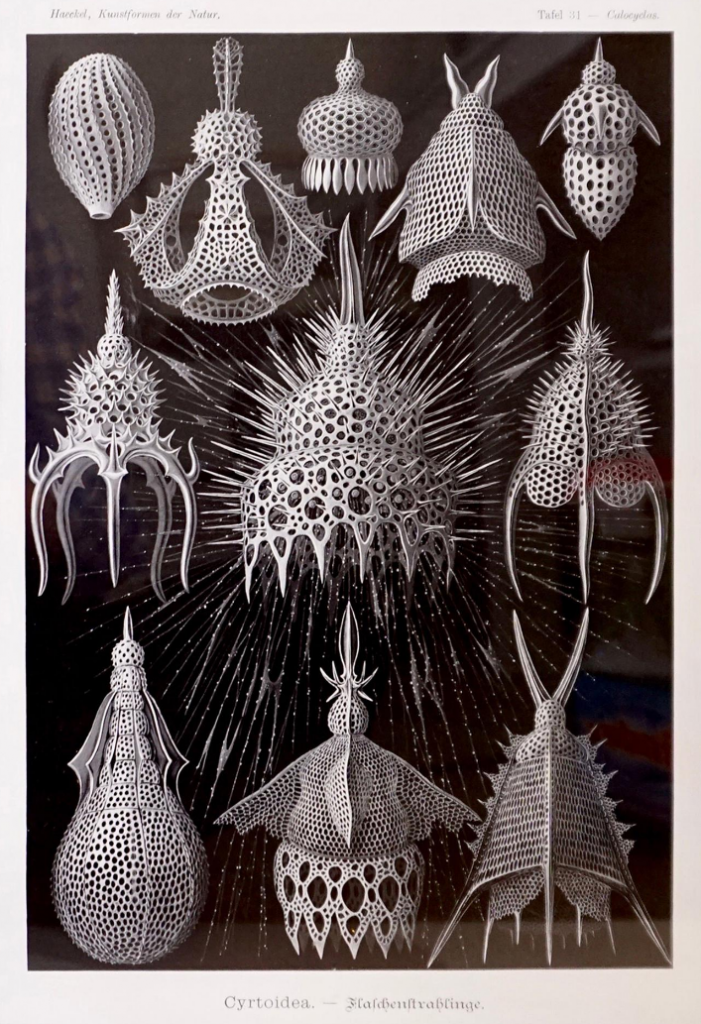
I was still devoted to completing this idea, so I did a bit more research and am glad I did as I made an important discovery. Eureka! I discovered that copper and glass have the same coefficient of expansion and contraction, which allows the works to remain intact and not crack.
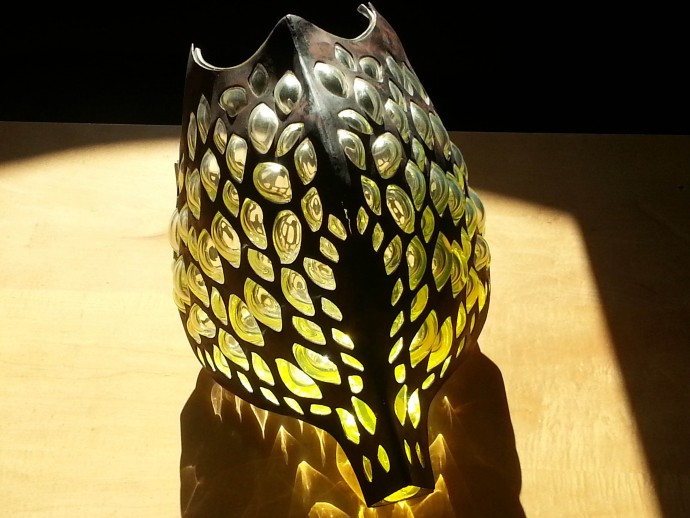
Now I had the metal cut and ready to go. Wonderfully I received an invitation to Pilchuck from artist director Ruth King as a visiting artist and offered three excellent assistants during my residency. Simon Maberly, Joey Cariati, and Michael Shiner are THE dream team.
My wife Amy Youngs was also at this same residency and, as a result, was given an assistant, and she brought Kami Megan (Westhoff), another glass artist extraordinaire. It was beautiful to also have Kami’s advice in this process and suggestions about adding powdered color to the soda-lime glass. Kami and Simon also assisted Joey Cariati and Michel Shiner in the blowing process, as glass exemplifies the collaborative process of making.
At Pilchuck, we used tig welding to join the three pieces together.
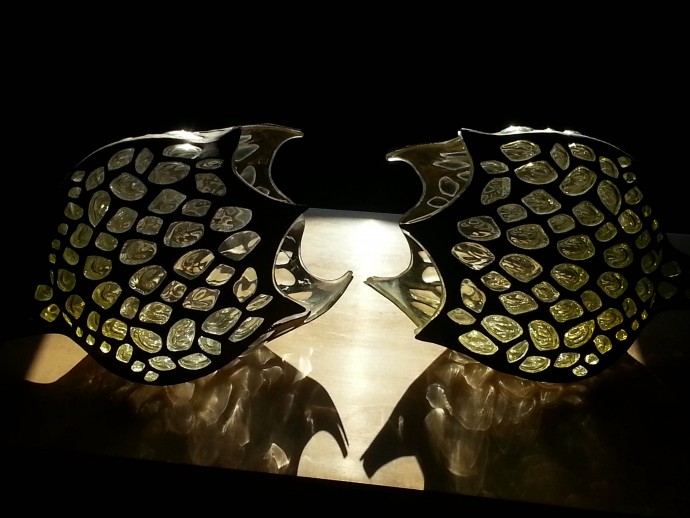
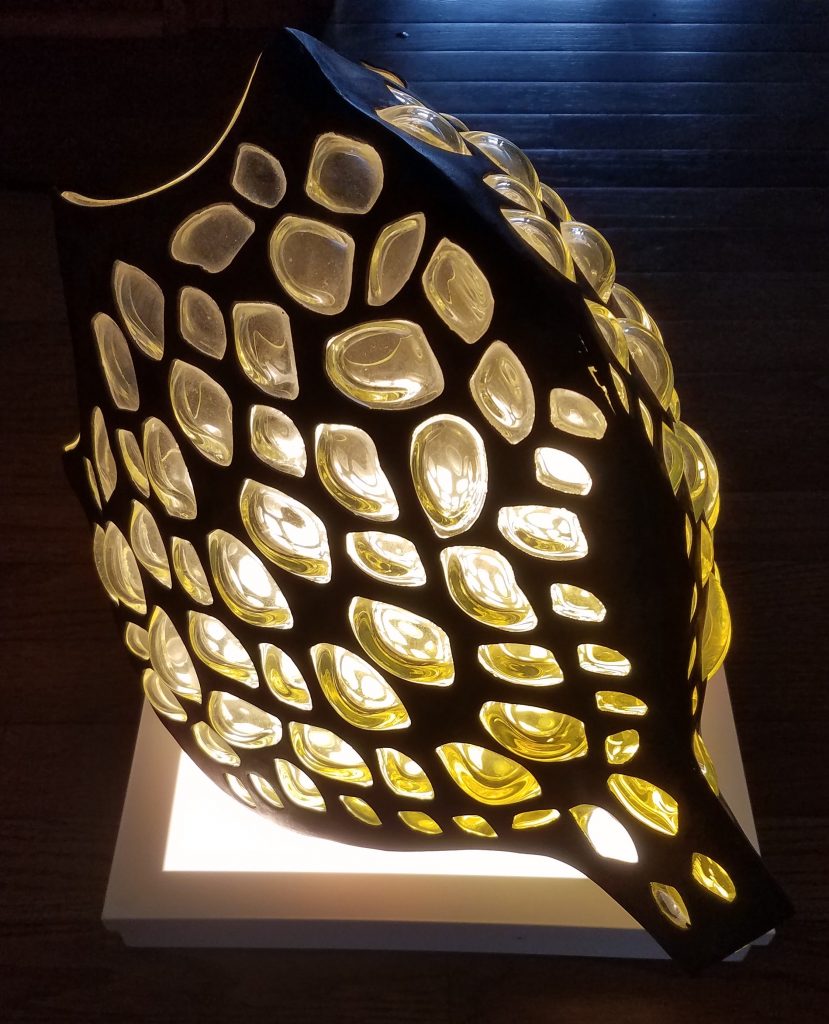
Once the glass was blown into the forms, removing the excess glass around the sharp edges was really scary. I was lucky to have Simon Maberly as the glass artist who did the cold-working in removing the glass from the edges.
He did a superb job with the cold working, and to this day, these are some of my favorite glassworks in my collection.
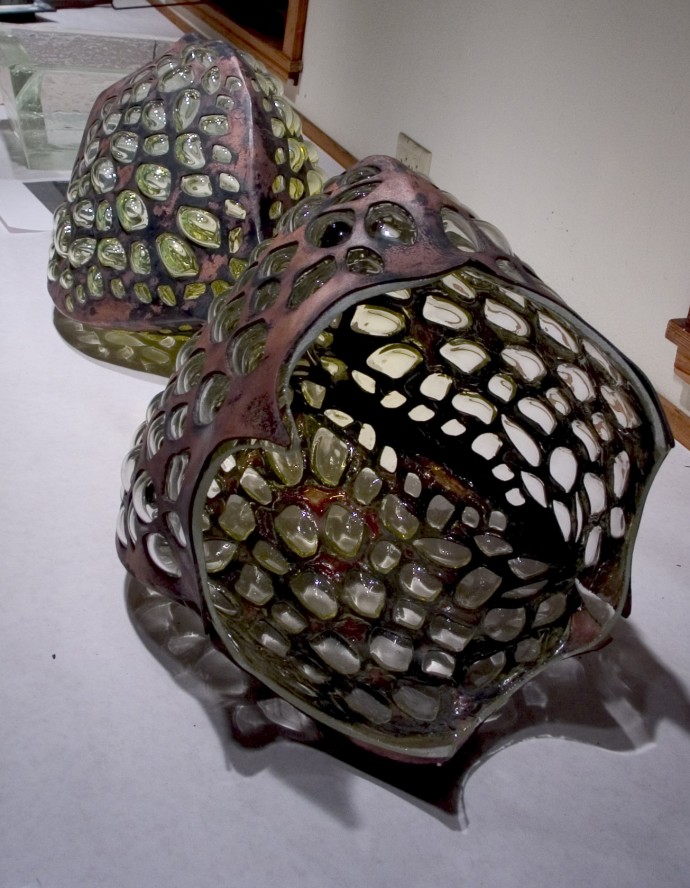
They have a natural patina that resulted from the annealing process, and once they came from annealing, I felt the finish was ideal.

Exhibitions
CAMERON ART MUSEUM, Wilmington, North Carolina, Jan 27-May 2022
Confluence Exhibition curated by the Algae Society and Gene Felice invites the work Diatomaceous.
PILCHUCK ARTISTS IN RESIDENCY EXHIBITION Seattle, Washington. Aug 16- Sep. 2, 2005
Working on new glassworks utilizing biological and electronic materials. Invited. Displayed: Diatomaceous and Twittering Rabbit Foot. Curator Ruth King.
Artist and director:
Ken Rinaldo, 3D modeling, laser cutting
CREDITS/TECHNICAL
Glass blowing: Joey Cariati and Michael Shiner at Pilchuck Glass School
Coldworking and metal welding Simon Maberly
Metal Cutting Fabrication: AllFab Inc. Columbus, Ohio Russel Roth Jr/Sr
SHOW REQUIREMENT and DIMENSIONS
This work can be displayed on a pedestal.
KEYWORDS
3D modeling, laser cutting, illustrator cut paths
COLLECTIONS
One in the Collection of the Cameron Arts Museum Wilmington, North Carolina, Jan 27-May 2022
One In the Collection of the Artist
PURCHASE
